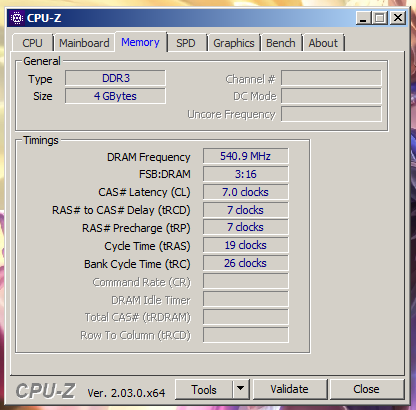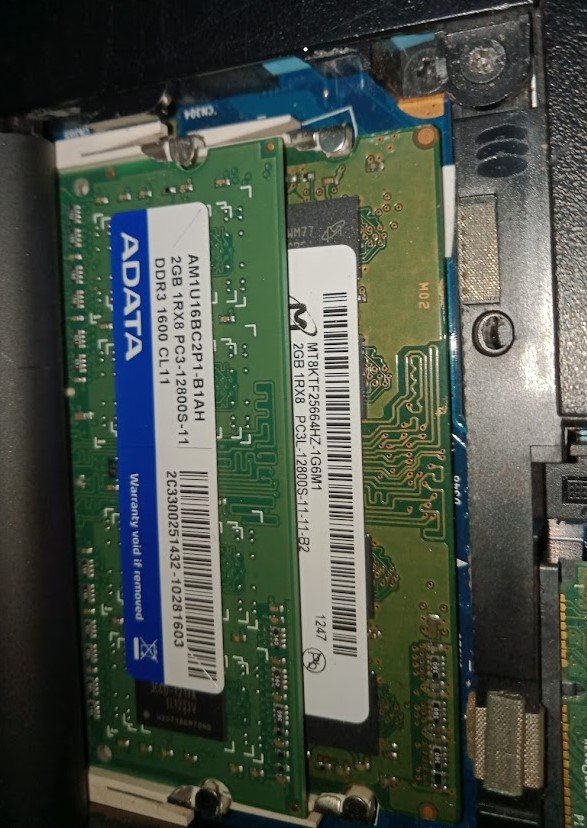Comparing: SK hynix H9TQ27ADFTMC vs DDR3 SODIMM 1066MHz [Disk]
In this comparison, we analyze two Disks: SK hynix H9TQ27ADFTMC and DDR3 SODIMM 1066MHz [Disk], using synthetic benchmark tests to evaluate their overall performance. This side-by-side comparison helps users understand which hardware delivers better value, speed, and efficiency based on standardized testing. Whether you're building a new system or upgrading an existing one, this benchmark-driven evaluation offers valuable insights to guide your decision.

SK hynix H9TQ27ADFTMC
| Type: | Disks |
|---|---|
| Model: | SK hynix H9TQ27ADFTMC |
| Capacity: | 32GB |
| Interface: | eMMC |

DDR3 SODIMM 1066MHz [Disk]
| Type: | Disks |
|---|---|
| Model: | DDR3 SODIMM 1066MHz [Disk] |
| Capacity: | 2GB |
| Interface: | DDR3 |
Specification Comparison Table
This specification comparison presents technical details of several devices or components to help you understand the key differences between each option. Use this table as a reference to determine which device best suits your needs.
| Specification | SK hynix H9TQ27ADFTMC | DDR3 SODIMM 1066MHz [Disk] |
|---|---|---|
| Brand | SK hynix | - |
| Format | eMMC 5.1 | RAM Disk |
| Capacity | 32GB | 2GB |
| Interface | eMMC | DDR3 |
Submission Comparison Table
This submission comparison table displays the number and details of benchmark data submissions from various devices or components. This information helps you understand the performance based on the benchmarks that have been tested, as well as providing an overview of the consistency and popularity of the available benchmark results.
Submission Comparison Chart
This chart visualizes the benchmark scores comparison between two hardware devices based on submitted data.
Media Gallery
A collection of photos of tested hardware. These images can help you identify the physical form, model, and variant of the hardware in question. These photos are from our own documentation, and if they are not available we may not be able to document them.
About Hardware SK hynix H9TQ27ADFTMC
SK hynix H9TQ27ADFTMC is an eMMC (embedded MultiMediaCard) based storage chip designed for mobile devices and embedded systems. With NAND Flash technology, it offers an efficient and power-efficient internal storage solution for devices with light to medium computing needs. It has become a common choice in entry-level smartphones, tablets, and Internet of Things (IoT) devices, thanks to its combination of sufficient capacity, high endurance, and long-term stable performance.
As an internal chip, the H9TQ27ADFTMC comes in a small yet reliable package, combining the controller and flash memory in a single unit for easy integration in consumer devices. One of the main advantages of eMMC storage like this is low power consumption and better data access latency compared to traditional SD card-based storage.
The test was conducted on an OPPO A5s device, a smartphone with a MediaTek Helio P35 (MT6765) processor, 3GB of RAM, and 32GB of internal storage. The operating system used was Android 8 with the ColorOS 5.2 interface. The test was conducted after the device had been in use for more than four years, so performance results may have decreased due to NAND Flash degradation over time.
In testing using the Cross Platform Disk Test (Mobile), the read speed of 114.31 MB/s and write speed of 13.07 MB/s were obtained. These results show that despite its age, the eMMC's read performance is still quite good for activities such as opening applications, loading the system, and streaming light content.
As a first-in-class internal storage solution, the SK hynix H9TQ27ADFTMC is suitable for devices that require fixed (non-removable) internal storage capacity with high efficiency, low cost, and sufficient endurance for daily use. Although its write speed is not as fast as more modern UFS technology, eMMC remains a popular choice due to its stability and ease of integration in many low- to mid-end devices.
Device: OPPO A5s
CPU: MediaTek MT6765 Helio P35
RAM: 3GB
Storage: 32GB
OS: Android 8, ColorOS 5.2
* The test was conducted after the device was approximately 4 years old, perhaps the performance has decreased
Sunday, 08 September 2019 11:02:46 | Update: 1 month ago
About Hardware DDR3 SODIMM 1066MHz [Disk]
DDR3 SODIMM 1066MHz is a third-generation memory module with a speed of 1066MHz that is commonly used in laptops and small devices. With the SODIMM form factor, these modules are often the standard choice for mobile computing systems, serving as the main memory for running operating systems, applications, and light to medium multitasking processes.
However, in this particular experiment, two 1066MHz DDR3 SODIMM modules from Micron and ADATA (2GB capacity each) were uniquely configured as a RAMDisk, a temporary storage space that uses RAM capacity to simulate a storage drive with much higher access speeds than SSDs or HDDs.
The 1066MHz DDR3 SODIMM-based RAMDisk test was conducted on an HP 1000 1b05au laptop device, powered by an AMD E1-1200 processor. The system is equipped with a 2x2GB DDR3 SODIMM 1600MHz RAM configuration, but due to processor architecture limitations, the memory only runs in single channel mode with an effective speed of 1066MHz. The operating system used is Windows 7, and to create and manage the RAMDisk, two popular applications, SoftPerfect RAMDisk and ImDisk Virtual Disk Driver, were used. The configured RAMDisk size was 2GB, utilizing some of the available RAM capacity.
Even though the device specifications are old and have limited memory bandwidth, the RAMDisk configured in this system was still able to show excellent performance in the read and write speed benchmarks. Based on tests using CrystalDiskMark, the read speed reached 746.24 MB/s, while the write speed touched 828.18 MB/s. In a follow-up test using ATTO Disk Benchmark with a 64MB block size, the read speed increased to 1020.00 MB/s, and the write speed reached 1080.00 MB/s. These results prove that even on older systems, RAMDisk configurations are still capable of delivering very high I/O performance, far surpassing conventional storage such as HDDs or even some SSDs.
Analysis
The results show that a 1066MHz DDR3-based RAMDisk is still capable of delivering data transfer speeds on par with entry-level NVMe SSDs, even outperforming many SATA SSDs and leaving conventional HDDs far behind. This makes RAMDisks an ideal solution for temporary use such as:
- Application caching,
- Temporary file storage,
- Fast computing with high I/O,
- Software or script testing without the risk of contaminating the main file system.
Although limited to a small capacity (2GB in this test), RAMDisk is still very useful for specific needs, especially for users with more than enough RAM or older devices that want to maximize their performance.
Test on:
Device: HP 1000 1b05au
Specs:
CPU: AMD E1-1200
OS: Windows 7
RAM: 2x2GB Single Channel 2 DIMM 1066MHz (Does not support dual channel due to limitations of the CPU, currently running single channel mode and 1066MHz)
Wednesday, 26 December 2012 14:27:32 | Update: 1 month ago



